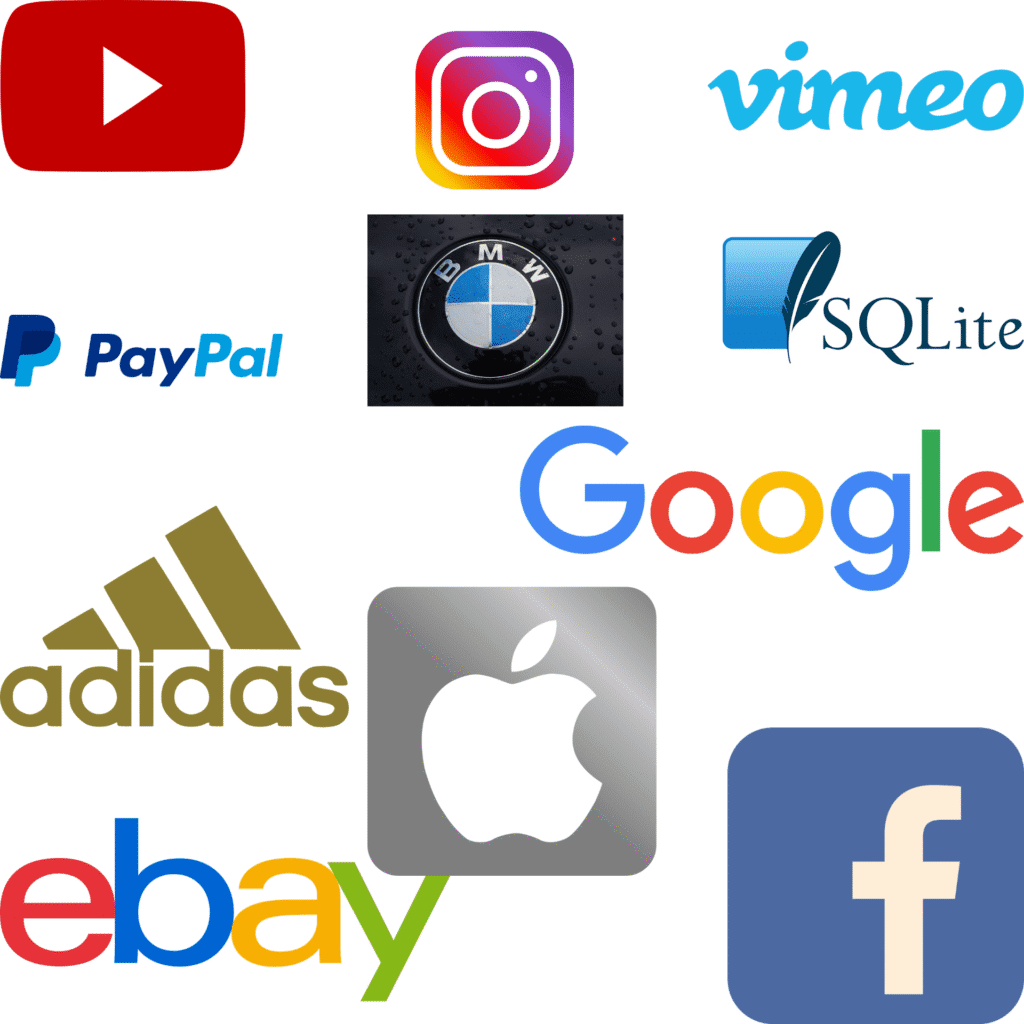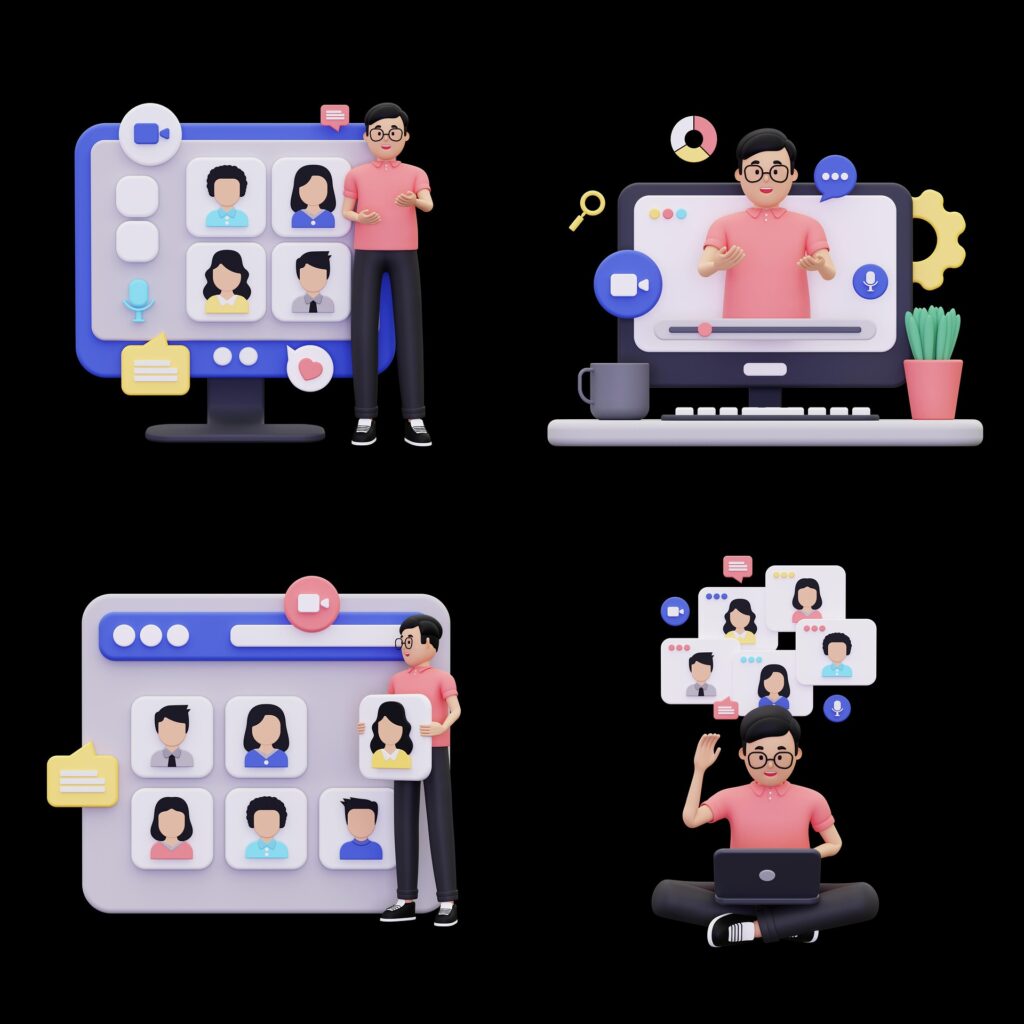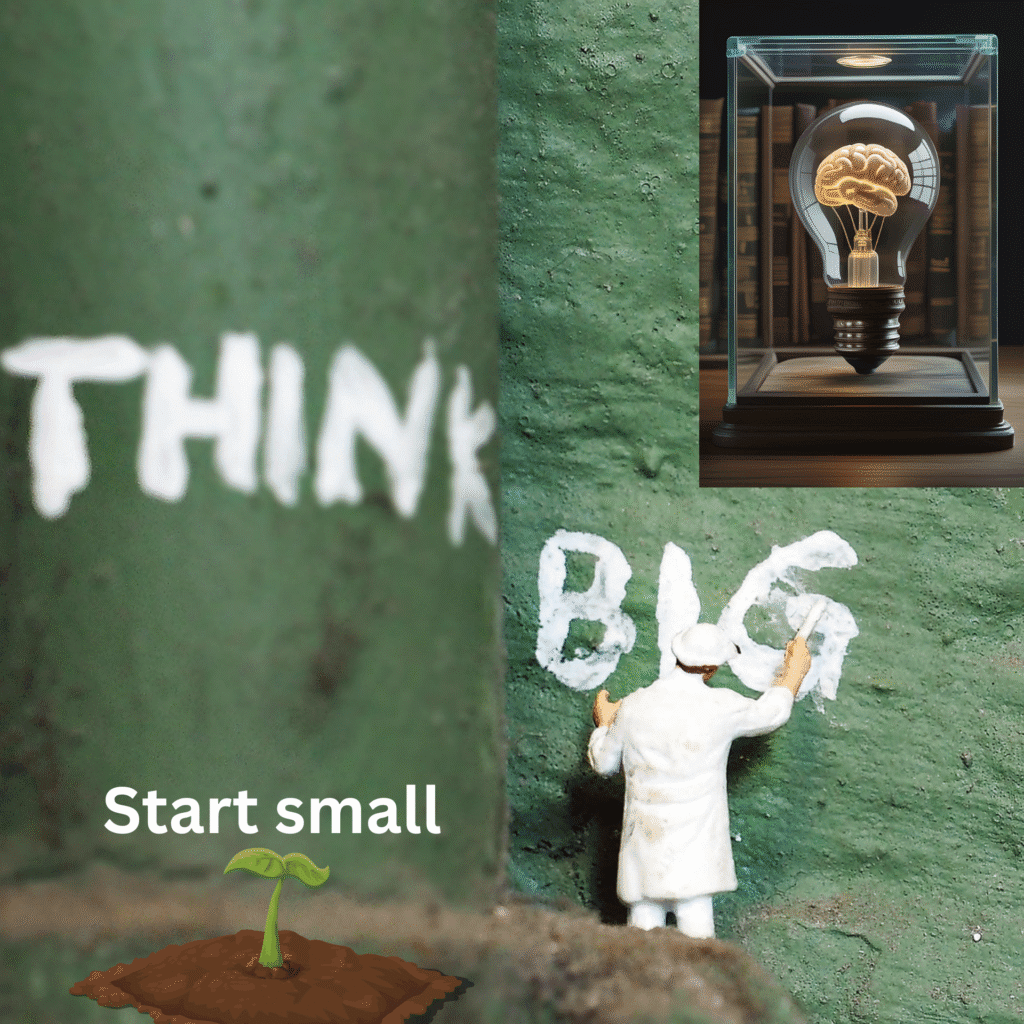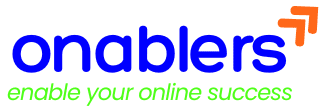This is exactly what I did wrong while starting online—so you don’t have to.
When I first tried to start an online business while working full-time in healthcare, I did what most beginners do: ✨ I made it complicated. And trust me, I wasn’t trying to. I was just doing what everyone else online seemed to be doing, thinking that’s what success looked like.
I thought that in order to be “taken seriously,” I needed a slick logo, a professional website, paid tools for everything, and of course, a business name that sounded official™. I spent three months perfecting my spiritual niche blog’s branding, choosing the perfect color palette, and crafting the most eloquent “About Me” page you’ve ever seen.
Spoiler alert: I had none of those things figured out when I made my first $1.
In fact, all that polished branding almost killed my business before it even started. While I was busy making things look professional, I completely forgot to focus on the one thing that actually matters: helping real people solve real problems.
If you’re reading this and thinking, “But Leo, I need to look professional to compete,” I get it. I really do. But what I’m about to share with you might save you months of wasted effort and get you to your first sale faster than you ever thought possible.
The Beginner Branding Trap (And Why It’s Killing Your Progress)
Let’s talk about what I did first – and what I now never recommend to anyone starting their first online business: I obsessed over “branding.” I spent hours designing logos, playing with colors, and trying out fancy names. I researched competitors’ websites, analyzed their color schemes, and convinced myself that the perfect brand identity was the key to success.
The Logo Rabbit Hole

I remember spending an entire weekend on Canva, creating dozens of logo variations for my spiritual blog. I had circular logos, text-based logos, minimalist logos, and even tried to incorporate mystical symbols. Each one felt like it was missing something, so I’d start over.
Meanwhile, I had written exactly zero blog posts. I had no content calendar. I hadn’t even decided what specific problems I was going to help people solve. But man, did I have some beautiful logos sitting in my Canva drafts!
This is what I call the “logo rabbit hole” – that dangerous place where you convince yourself that the perfect visual identity is the missing piece of your business puzzle. The truth? Your logo doesn’t make you money. Your solutions do.
The Website Perfectionism Trap

After the logo obsession came the website perfectionism trap. I spent weeks tweaking fonts, adjusting spacing, and trying to create the perfect user experience. I researched the best themes, watched countless YouTube tutorials about web design, and even bought premium plugins I didn’t understand.
The most ridiculous part? I was building a website for a business that didn’t exist yet. I had no clear offer, no defined target audience, and no proven value proposition. But I convinced myself that once I had the perfect website, everything else would fall into place.
Here’s what actually happened: I launched a beautiful, professional-looking website that said absolutely nothing meaningful to anyone. It was like building a gorgeous storefront for a shop that had no products on the shelves.
The Tool Trap
Then came the tools. Oh, the tools! I researched and purchased premium email marketing software, social media scheduling tools, advanced analytics platforms, and professional design software. I thought having the same tools as successful entrepreneurs would somehow make me successful too.
I spent more money on tools in my first month than I made in my first six months. Not because I needed these tools, but because I thought they were the secret sauce. I was like someone buying a Ferrari before learning how to drive.
The “Official™” Business Name Syndrome
The final piece of my branding obsession was finding the perfect business name. It had to be memorable, professional, brandable, and available as a domain name across all social media platforms. I spent days brainstorming, checking domain availability, and even considered hiring a naming consultant.
I created elaborate backstories for potential business names, imagined how they’d look on business cards, and pictured myself introducing my company at networking events. But I had no business to name! I was naming a concept, not a functioning company.
All of this branding work felt productive. It felt like I was building something important. But the harsh reality is that I was just procrastinating on the hard work of actually creating value for people.
The Real Cost of Branding First
The cost of my branding obsession wasn’t just the time and money I wasted – though that was significant. The real cost was opportunity. While I was perfecting my visual identity, I could have been:
- Talking to potential customers about their problems
- Creating my first product or service
- Building an email list of interested people
- Making my first sale and learning from real feedback
- Developing the skills I’d actually need to run a business
Perfectionism Paralysis
The more polished my branding became, the more pressure I felt to live up to it. I’d created this beautiful, professional image that I felt I had to maintain. This led to perfectionism paralysis – I was afraid to post content that wasn’t up to my brand standards, launch products that weren’t perfectly aligned with my visual identity, or pivot when I learned something new about my market.
The irony is that branding is supposed to make business easier, not harder. But when you start with branding instead of building it around a real business, it becomes a constraint rather than a tool.
The Impostor Syndrome Amplifier
Having a professional brand before having a profitable business amplified my impostor syndrome. I looked successful on the outside, but I knew I was just playing dress-up. Every time someone complimented my website or logo, I felt like a fraud because I wasn’t actually helping anyone or making any money.
This disconnect between appearance and reality created anxiety that made it even harder to take the real actions needed to build a business. I was so worried about maintaining my professional image that I avoided the messy, imperfect work of actually serving customers.
The Sunk Cost Trap
Once I’d invested so much time and effort into my branding, I felt trapped by it. Even when I realized my spiritual niche wasn’t working, I was reluctant to pivot because I’d spent so much time creating the perfect brand for that market.
This is the sunk cost trap – continuing down a path because you’ve already invested in it, even when you know it’s not working. My beautiful branding became an anchor that held me back from adapting and improving.
If You’ve Been Doing the Mindset Work…
If you’ve been following along with our previous articles about entrepreneurial mindset development (see article here) and choosing your business idea (see article here), then you’re already a step ahead of where I was. You understand that your worth as an entrepreneur doesn’t come from a polished presence – it comes from the value you offer and the connections you make with real people.
Value Over Vanity
The mindset work we covered teaches you that business success isn’t about looking the part; it’s about playing the part. When you internalize this truth, you stop obsessing over visual perfection and start focusing on actual performance.
I wish I’d understood this fundamental principle when I started: people don’t buy from brands they admire – they buy from businesses that solve their problems.
Your customers care about what you can do for them, not how pretty your logo is.
Building Momentum Through Action
The right entrepreneurial mindset prioritizes momentum over perfection. Every day you spend on branding is a day you’re not building relationships with potential customers, testing your ideas in the real world, or developing the skills you’ll actually need to succeed.
That momentum-building mindset would have saved me months of spinning my wheels. Instead of asking “How can I make this look more professional?” I should have been asking “How can I help someone solve a problem today?”
Confidence From Competence
Here’s something nobody tells you about branding: it doesn’t create confidence – competence does. You can have the most beautiful brand in the world, but if you’ve never actually helped a customer or made a sale, you’ll still feel like you’re playing pretend.
Real confidence comes from real results. When you focus on developing your ability to create value for people, your confidence grows naturally. That authentic confidence is more attractive to potential customers than any logo could ever be.
What Actually Matters When You’re Starting Out
If I could go back and give myself one piece of advice, it would be this: “Don’t start with a brand. Start with a solution.”
After years of making these mistakes myself and watching dozens of other beginners fall into the same traps, I’ve identified what actually moves the needle when you’re starting your first online business.
The Three-Pillar Foundation
Instead of starting with branding, start with these three pillars:
ONE simple offer – Something you can help with, teach, solve, or create. Not perfect. Just real.
- ONE way to share it – Post it on social media. Message a few people. Join a community. Tell the world what you do—even if it’s messy.
- ONE way to get paid – Use PayPal, Stripe, or whatever works in your country. Your first sale isn’t just income—it’s proof that your idea has legs.
Why One of Everything?
The “one of everything” approach isn’t about being lazy or taking shortcuts. It’s about focusing your limited time and energy on the activities that actually generate business results.
When I started ONABLERS, I followed this exact approach. I had one simple offer: helping beginners navigate digital entrepreneurship. I shared it in one way: through honest, helpful content on social media. And I had one way to get paid: a simple payment link for anyone who wanted personalized guidance.
That’s it. No complex sales funnels, no elaborate branding strategy, no expensive tools. Just clarity about what I offered, consistency in sharing it, and simplicity in the transaction process.
The Power of Simplicity
Simplicity isn’t just easier for you – it’s better for your customers too. When people visit your social media profile or website, they should immediately understand what you do and how you can help them. Complex branding often confuses rather than clarifies.
My current approach with ONABLERS is built on this principle: clear messaging, simple offers, and straightforward processes. People know exactly what they’re getting and how to get it. No confusion, no friction, no unnecessary complexity.
Starting Small, Thinking Big

The “one of everything” approach doesn’t mean thinking small forever. It means starting small so you can grow smartly. Once you’ve proven your concept with real customers and real revenue, you can invest in professional branding, advanced tools, and complex systems.
But starting with simplicity gives you the flexibility to adapt as you learn. If your first offer doesn’t work, you can pivot quickly without having to rebuild an entire brand identity. If you discover a new market opportunity, you can explore it without being constrained by your existing branding.
Real Talk: Your Website Can Wait
Another big mistake I made was trying to build a website before I had anything to sell. I spent hours tinkering with fonts and layouts, hoping it would somehow “attract” customers. But here’s the reality: no one buys from a website that says nothing meaningful.
The Website-First Fallacy
There’s this pervasive belief among new entrepreneurs that you need a professional website before you can start a business. This is completely backwards. Your website should be the result of having a successful business, not the foundation for building one.
I see this mistake constantly in entrepreneurship communities. Someone will post their beautiful new website asking for feedback, and when you dig deeper, you discover they have no customers, no revenue, and no clear value proposition. They’ve built a monument to a business that doesn’t exist yet.
What Websites Actually Do
A website’s job is to communicate your value proposition clearly and make it easy for interested people to do business with you. But if you don’t know what your value proposition is, or if you don’t have interested people yet, a website is just digital decoration.
The most successful entrepreneurs I know didn’t start with websites. They started by solving problems for real people, often through direct communication, social media, or existing platforms. The website came later, once they had a proven business model and a clear understanding of their market.
The Social Media Alternative

Here’s what I recommend instead of building a website first: use your social media profiles as your business headquarters. A well-optimized Instagram (see our Instagram page here), LinkedIn (see our LinkedIn page here), or TikTok (see our TikTok page here)profile can do everything a basic business website can do:
- Clearly communicate what you offer
- Showcase your personality and expertise
- Provide a way for people to contact you
- Display social proof from satisfied customers
- Share valuable content that attracts your target audience
The advantage of social media is that it’s free, it’s where your customers already spend time, and it forces you to communicate clearly and concisely. Plus, you can start immediately without any technical skills or setup time.
My New Rule: “One Offer. One Page. One Payment Link.”
This is how I run ONABLERS now, and it’s how I teach others to start. Instead of a complex website with multiple pages and elaborate navigation, create one simple page that clearly explains:
- What specific problem you solve
- How you solve it
- What it costs
- How to get started
That’s it. Everything else is optional. You can create this “page” as a social media post, a simple landing page, or even just a clear bio on your existing profiles.
The Power of Constraints
Having just one page forces you to be crystal clear about your value proposition. You can’t hide behind clever copy or complex navigation – you have to communicate your core message simply and directly.
This constraint is actually liberating. Instead of worrying about website design, user experience, and technical details, you can focus entirely on crafting a compelling offer and finding people who need what you’re selling.
The Minimum Viable Business Approach
What I’ve learned through my own mistakes and successes is that the best way to start a business is with what I call the “Minimum Viable Business” approach. This is inspired by the lean startup methodology but simplified for solo entrepreneurs and beginners.
What Is a Minimum Viable Business?
A Minimum Viable Business (MVB) is the simplest version of your business idea that can generate revenue and provide value to customers. It’s not about building everything you think you might need – it’s about building only what you know you need right now.
For ONABLERS, my MVB was incredibly simple:
- One clear service: helping beginners with digital entrepreneurship
- One communication channel: social media content and direct messages
- One payment method: PayPal invoices
- One delivery method: personalized advice via email
That’s it. No website, no complex systems, no professional branding. Just a clear offer, a way to communicate it, and a method for delivering value.
The MVB Testing Framework
Your MVB should be designed to test three critical assumptions:
- Problem-Solution Fit: Do people actually have the problem you think they have, and does your solution address it effectively?
- Market Demand: Are enough people willing to pay for your solution at a price that makes sense for your business?
- Delivery Capability: Can you actually deliver the value you’re promising in a way that satisfies customers?
If your MVB can’t test these assumptions, it’s too complicated. Strip away everything that doesn’t directly contribute to validating whether your business idea works in the real world.
Building Your MVB in One Week
Here’s how you can build your own Minimum Viable Business in just one week:
Day 1: Define Your Core Offer Write one sentence that clearly explains what you do for whom: “I help [specific type of person] achieve [specific result] through [specific method].”
Day 2: Set Your Price Research what others charge for similar services and pick a price that feels slightly uncomfortable but not impossible. Remember, you can always adjust later.
Day 3: Create Your “Sales Page” This could be a social media post, a simple document, or even just a clear verbal pitch. Include:
- What you offer
- Who it’s for
- What results they can expect
- How much it costs
- How to get started
Day 4: Set Up Payment Processing Create a PayPal account or Stripe account or whatever account available in your area. Learn how to send invoices or payment links. Test the process with a small purchase.
Day 5: Practice Your Pitch Record yourself explaining your offer in 60 seconds or less. Practice until you can do it naturally and confidently.
Day 6: Identify Your First Customers Make a list of 20 people who might be interested in your offer. These could be friends, family, social media connections, or people in relevant online communities.
Day 7: Make Your First Sales Attempts Reach out to people on your list. Share your offer, ask for feedback, and try to make your first sale. Even if no one buys, you’ll learn valuable information about your market.
The Art of Starting Ugly
One of the most important lessons I’ve learned is what I call “the art of starting ugly.” This means being willing to launch imperfect products, share unpolished content, and put yourself out there before you feel ready.

Embracing Imperfection
My first attempts at content creation were embarrassingly bad. My early blog posts were poorly structured, my social media posts were awkward, and my first attempts at selling were clunky and uncomfortable. But each imperfect attempt taught me something valuable about my audience, my message, and my market.
The entrepreneurs who succeed aren’t those who start with perfect executions – they’re those who start with imperfect executions and improve through iteration. Every successful business you admire started with version 1.0, which was probably pretty rough around the edges.
The Learning Loop
Starting ugly creates a learning loop that polished perfection can’t match:
- Launch something imperfect but functional
- Learn from real customer feedback and market response
- Improve based on what you learned
- Repeat the process with the next iteration
This cycle happens much faster when you’re not trying to perfect every detail before launching. You get real-world feedback quickly, which is infinitely more valuable than hypothetical planning.
Building Authenticity
There’s something refreshingly authentic about businesses that start ugly and grow organically. Customers appreciate seeing the journey, understanding the evolution, and being part of the growth story. This authenticity often creates stronger customer relationships than polished perfection ever could.
When I share my early mistakes and learning experiences with ONABLERS readers, it resonates because it’s real. People connect with the human story behind the business, not just the final polished product.
The Perfectionism Antidote
Starting ugly is the best antidote to perfectionism because it forces you to focus on function over form. When you’re willing to put imperfect work into the world, you stop procrastinating and start progressing.
This doesn’t mean being sloppy or unprofessional. It means prioritizing progress over perfection and being willing to improve publicly rather than perfecting privately.
Building Systems That Scale (Without Overcomplicating)
As your business grows beyond the initial Minimum Viable Business stage, you’ll need to add systems and processes. But the key is to add complexity gradually, only when it’s needed, and always with a clear purpose.
The Just-in-Time System Philosophy
Instead of building elaborate systems upfront, adopt a “just-in-time” approach:
- Add systems only when their absence is causing real problems
- Choose the simplest solution that addresses the immediate need
- Plan for growth but don’t over-engineer for hypothetical futures
For example, I didn’t set up an elaborate customer management system when I started ONABLERS. I used a simple spreadsheet to track inquiries and follow-ups. Only when that became unwieldy did I upgrade to a more sophisticated system.
The Essential Systems Hierarchy
When you do need to add systems, prioritize them in this order:
- Payment Processing – Make it easy for people to pay you
- Customer Communication – Respond to inquiries and follow up consistently
- Content Creation – Develop a sustainable process for creating valuable content
- Lead Generation – Build systems to attract potential customers
- Delivery Optimization – Streamline how you deliver your products or services
Each system should solve a specific problem and make your business more efficient or effective. If you can’t clearly articulate what problem a system solves, you probably don’t need it yet.
Automation vs. Sophistication
There’s a difference between helpful automation and unnecessary sophistication. Helpful automation eliminates repetitive tasks and ensures consistency. Unnecessary sophistication adds complexity without clear benefits.
Good automation examples:
- Automatic email responses to inquiries
- Scheduled social media posts
- Invoice generation and payment reminders
- Customer onboarding sequences
Unnecessary sophistication examples:
- Complex CRM systems with features you don’t use
- Elaborate marketing funnels with multiple steps
- Advanced analytics tools that don’t inform decisions
- Expensive software that duplicates simpler solutions
The Long-Term Branding Strategy (When You’re Ready)
Remember, the goal isn’t to avoid branding forever – it’s to build your brand around a real, profitable business rather than creating a brand and hoping a business grows around it.
Here’s the truth about branding: it’s incredibly important for long-term business success. But it should be the result of understanding your market, not the starting point for entering it.
When to Start Thinking About Professional Branding
You’re ready to invest in professional branding when:
- You have consistent monthly revenue (at least $2,000-$5,000 per month)
- You clearly understand your target market and their preferences
- You have a proven value proposition that resonates with customers
- You’re getting referrals and repeat business
- You’re ready to scale beyond just yourself
Building Brand on Business Foundation
When you do start developing your professional brand, you’ll have a huge advantage over entrepreneurs who start with branding: you’ll have real data about what works.
You’ll know:
- What language resonates with your customers
- What problems they’re most eager to solve
- What results they value most
- How they prefer to communicate and engage
- What differentiates you from competitors
This knowledge makes branding decisions much easier and more effective. Instead of guessing what might work, you can build a brand that reflects what you know works.
The Evolutionary Approach to Branding
The best approach to branding is evolutionary, not revolutionary. Let your brand emerge naturally from your business activities:
- Use the colors and styles that feel authentic to you
- Develop a voice that matches how you naturally communicate
- Choose imagery that reflects your actual work and values
- Create a visual identity that supports your business goals
This evolutionary approach creates brands that feel authentic and sustainable because they’re built on real business foundations rather than theoretical concepts.
Your Next Steps: Action Over Aesthetics
If you’ve been stuck in the branding trap, here’s how to break free and start building a real business:
The 24-Hour Challenge

In the next 24 hours, I want you to:
- Write one clear sentence about what you offer and to whom
- Set a price for your service or product
- Tell at least five people about your business
- Ask at least one person if they’d be interested in buying
Don’t worry about logos, websites, or business cards. Just focus on connecting with people who might benefit from what you offer.
The 7-Day Detox
For the next seven days, avoid all branding-related activities:
- No logo design
- No website tweaking
- No color palette research
- No business name brainstorming
Instead, spend that time on:
- Creating valuable content
- Talking to potential customers
- Improving your core offer
- Learning about your market
The Reality Check Questions
Before you spend time on any business activity, ask yourself:
- Will this help me understand my customers better?
- Will this help me serve my customers better?
- Will this help me attract more customers?
- Will this help me generate more revenue?
If the answer to all four questions is no, don’t do it – at least not yet.
The ONABLERS Approach: Building Real Before Building Beautiful
At ONABLERS, we believe in building real before building beautiful. This means focusing on substance over style, function over form, and results over recognition.
The Real-First Philosophy
Every successful business starts with solving real problems for real people. Everything else – the branding, the websites, the sophisticated systems – should support that core purpose, not replace it.
When you start with real value creation, you build a business that’s inherently sustainable. When you start with beautiful branding, you might create something that looks successful but has no foundation to support long-term growth.
The Community Advantage

One of the biggest advantages of starting with substance over style is that it attracts the right kind of community. People who care about results, growth, and genuine value are much better customers and supporters than those who are only attracted to polished presentations.
The ONABLERS community is built on this principle. We attract people who are serious about building real businesses, not just playing entrepreneur. This creates a more supportive, productive environment for everyone involved.
Your Invitation to Start Real
If you’re ready to stop playing business and start building one, you’re welcome in our community. We’re here to support you with practical guidance, honest feedback, and encouragement when things get tough.
But remember: the community can’t do the work for you. You still need to pick up the phone, send the email, create the content, and ask for the sale. We’re here to help you do it more effectively, but we can’t do it for you.
The Time Is Now

Every day you spend on branding is a day you’re not building a real business. Every hour you invest in making things look perfect is an hour you could spend making them work better.
Your future customers don’t care about your logo – they care about whether you can solve their problems. Your potential success doesn’t depend on your color palette – it depends on your ability to create value for people who need what you offer.
The businesses that change the world aren’t those with the prettiest branding. They’re those that solve important problems for real people. And that work starts today, with whatever you have, however imperfect it might be.
Stop designing. Start building. Your real business is waiting for you to begin.


